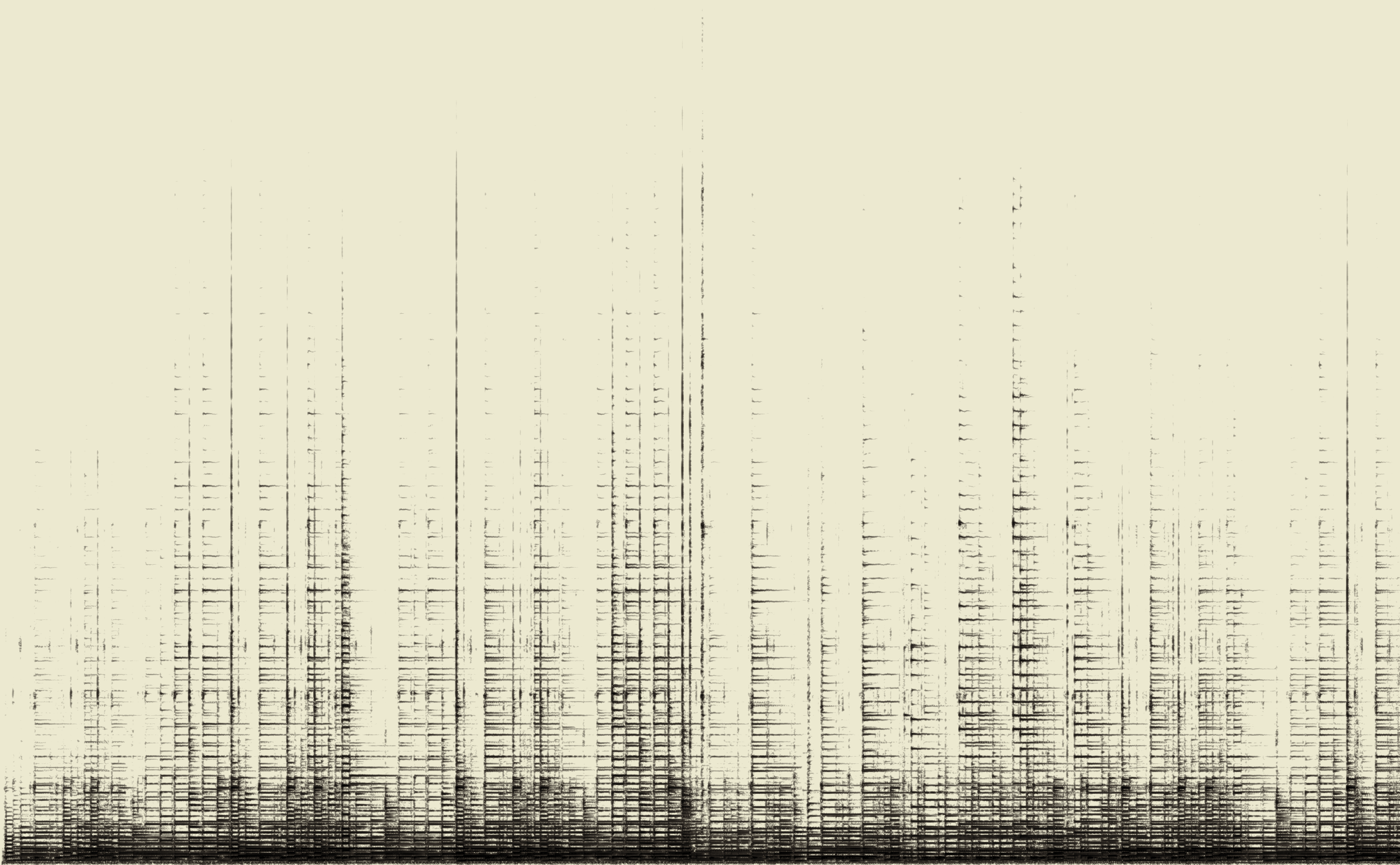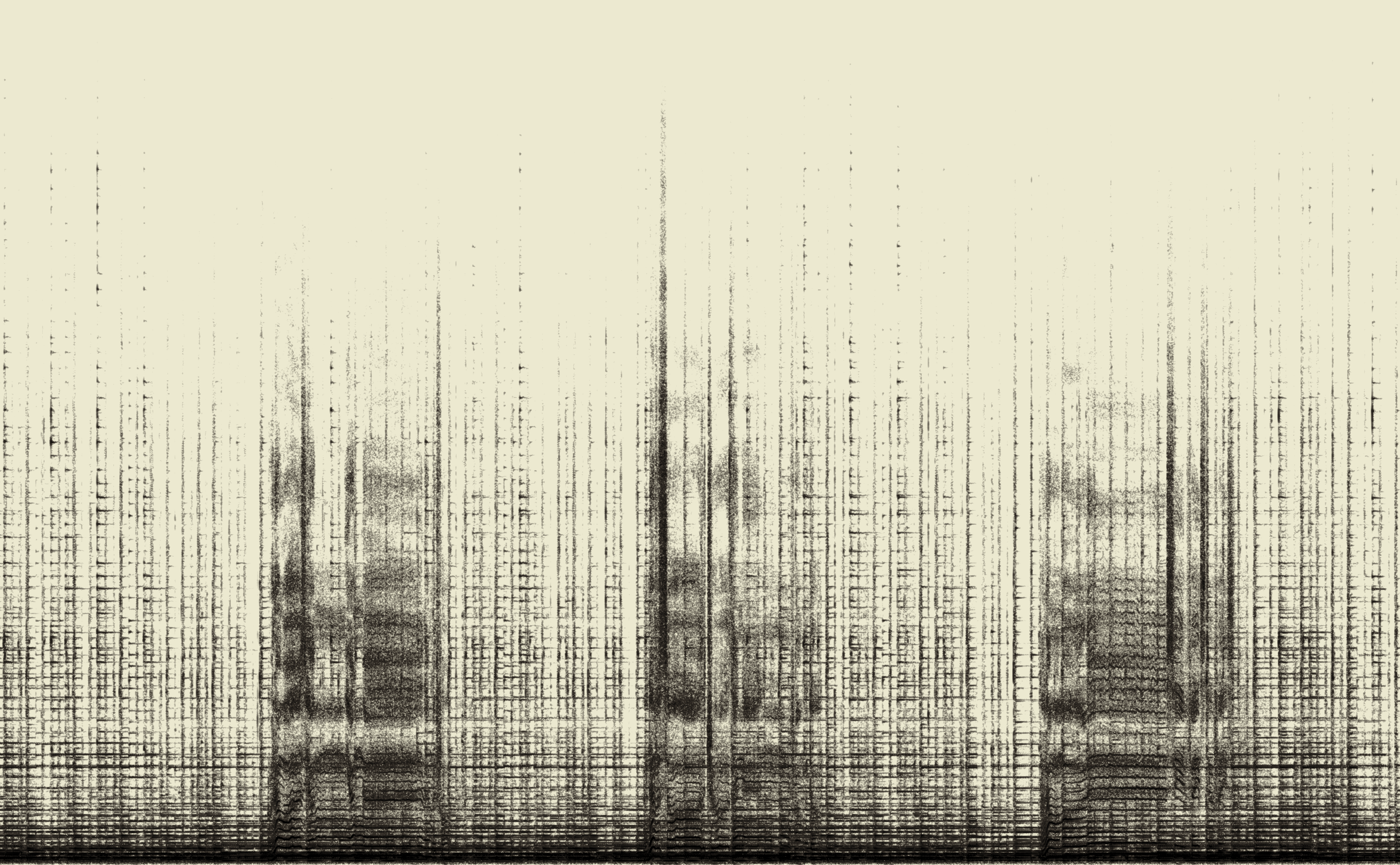
“The ideal vibrating string is depicted in Fig.6.1. It is assumed to be perfectly flexible and elastic. Once ‘plucked’, it will vibrate forever in one plane as an energy conserving system.”
—Julius Orion Smith III, Physical Audio Signal Processing
The guitar featured on Nick Drake’s 1972 album Pink Moon, and indeed all other guitars (to the extent that there are other guitars) does not have ideal strings. Once plucked, they vibrate in a warm box, pushing the air molecules into its corners and into spirals of eddying pressure. The particles of air in the room press back in on the strings, and on Nick’s fingers, and their excitation produces sound—but this physical excitation of the particles by the movement of the string produces a friction which both emphasises certain specific overtones in the sound produced and hastens the loss of kinetic energy which eventually causes the strings to fall silent.
A biological cell can be defined in the most general way as a kind of construction for maintaining disequilibrium. It contains a set of instructions, mechanisms for following those instructions, and a membrane that insulates it from its outside. Whether or not we consider its modular properties, including the cell’s ability to form and contribute to more complex structures, the disequilibrium is the essential state of its living. A cell which continuously soaks up entropy and perpetuates its own disequilibrium is alive, and a cell which achieves equilibrium is dead, and is precisely dead because of this equilibrium. Nick Drake’s strings in their plurality are suppressed by materiality, and will eventually fall into silence. An ideal string, though it will sound forever, is an energy conserving system which admits no entropy. It will remain both in motion and dead forever—a winking loop of data in an ideal eternity which we can only access via abstract cognition. Moving absolutely but not relatively: a constantly contorting mountain peak among rigid, static clouds.

In an early draft of this piece, I opened a paragraph with the sentence: ‘All sound is made from sine waves, stacked on top of each other.’ This is not untrue, but it is a truism. The usual specificity of this observation, that sound waves are sinusoidal, belies a more unusual fact about the general patterns of motion of material reality. To say that sound waves are sinusoidal seems to imply something selective about those waves, something that a quick survey of the motion we see around us reveals is misplaced. When a string is plucked, its motion under tension follows a sinusoidal pattern as it oscillates toward and away from the string’s resting state. In a speaker playing back a recording of that sound, the paper cone moves in a sinusoidal pattern as it is driven by an electromagnet. The alternating current of the electromagnet's two polarities is described by a sine wave. Any percussive noise, like knuckles rapping on a desk, partakes of this sinusoidal motion as the kinetic energy of the impact creates shockwaves that rush around the more or less rigid surface and produce a litany of untuned resonances. As pressure waves move through the air, the exciting energy of the disturbance comes up against the friction of the particles—driven by electromagnetic forces of attraction and repulsion—in a sinusoidal pattern.
This the natural language of classical mechanics—the physics of big things, things like wood, water, human bones and the moon. Things that were known to Isaac Newton, Shakyamuni, and the australopithecus known to us as Lucy. Sound moves in sine waves because the mechanisms of material change that drive vibration move in sine waves. In other words: if sound is the ripples left by a universe in motion, then it is not just sound or things but motion itself which is sinusoidal.
When they are realised in time and in motion, and not defined as an abstract geometrical thing, sine waves inherently have to have both a spatial character in the physical superposition of waves of various lengths, but also a temporal character in how the waves of different lengths require different lengths of time to periodise. This complex structure cannot be analysed in detail: the ear and auditory processing does not, and could not, hope to disassemble the overtone structure of what we hear. We experience the complexity of this overtone structure as a qualitative multiplicity. Timbre is the texture of sine wave superposition. Though all sound is sine waves, we do not directly experience the stunning harmonic arrangement of ratios that contribute to the timbre of guitar strings.

Nick Drake’s guitar is clean and bright—he plays the thing like it’s a harpsichord. The sound of the guitar, when played this way, is as pure an illustration of the seething pressure of materiality than has ever been conceived. The percussion of the elemental strum lets loose the energy of the string in a burst of discord, but before it is possible for the freely floating consciousness to pay any overt attention to this noise the strings settle into their periodic vibration, a clear and ringing musical note. The brightness of the guitar’s tone, as its various overtones are stacked, half again and half again, is an arrangement of sinusoidal levels in a great tower. The more energy that goes into the strum, the more levels this tower has, as the strings struggle against the chaotic initial motion and produce microscopic harmonics. As pressure and friction and thermodynamics decompose that initial spring and pivot, motion dies and the towers fall down. It is the tonic note, represented graphically at the bottom of the stack, which is the last to die away. The Tower of Babel is toppled in the end by the omnipotent application of physicality. The initial period of chaotic motion is so brief it cannot be detected directly except for by mechanical means, but it is extraordinarily important to the timbre of the guitar. Chaotic motion is not experienced directly, only what the motion implies—what it contributes to the phenomenal texture of the sound. But then, that is true of anything.
The harmonic resolution of a cadence resembles at least two things. The final miraculous motion of a key opening a great lock: in which every miniscule moving part rattles and resounds until eventually every disparate part lines up in an alignment. But each wave by itself is a jumpy, almost biological thing. They move in concord only together, resembling a great starling murmuration in which every bird responds to the movements of the others by an elastic relationship which produces the metabolism of a great meta-organism.

Drake’s voice is situated at right angles to this brightness—not in opposition, but diametric nonetheless. The voice can be seen physically as a thinly veined smudge accross the rigid towers of harmonics. The voice drifts through the structure of the towers like a ghost that tangles itself around parapets, the essential rarity of this spiritual substance at turns ripping bolts of energy through the sky with the noisy razor of sibilance. While the guitar is mechanical, architectural, regular, Drake’s voice is rhythmically tilted, breathy, and full of the microscopic shakes of a man who tries to combine the absurd performance of singing with a private and unformed whisper. Sibilance, the whisper, and the absurdity of singing as social performance all come with their contradictions. In the whisper as a mode of communication, we have an unvoiced, skeletal representation of language which dispenses with the warm warbling of human vocal cords and communicates only by the articulation of air-flow, the angular constriction of noise by which we differentiate between consonants.
In singing, we have the articulation of melody according to this angular constriction: the strange harmonic sweeping, dipping and diving with an underlying logic only accessible to speakers of a language. Singing is culturally considered the most personal of all sound creation—it belongs at or near the top of any hierarchy of honest expression—and yet it can only be articulated according to a semantic patchwork: languages we speak, generated over millennia of tiny social experimentations by local communities that get amplified out by chance and history to dominate ethnic, national, and super-national modes of communication. Nick Drake sings in English, a language with an unusual abundance of sibilance. Nick Drake's beautiful couplet “and the movement in your brain / sends you out into the rain” is only possible according to the tiny linguistic innovations of a million dead speakers; in cumulation magnificent in their scope and beauty. Individual words like “movement” (from Latin) and “rain” (from Germanic) combine in a reciprocal double register of Saxon and Latin according to a syntax which God only knows the earliest roots of. All this articulated in the vowels of England: lengthened, lowered, and hyper-corrected by centuries of battering influence from all over the mainland of Afro-Eurasia, before exporting itself out all over the world via colonialism and re-integrating the subsequent contortions from its children in an ongoing feedback loop.
Almost all discussions of Nick Drake’s Pink Moon centre the personal, and the autobiographical. I refuse to reproduce such context here. Anyone who is interested can easily find a dozen or more written pieces about that man, that bundle of events, desires, memories, settings, and modes. The phenomenal character of this music, the way in which it impresses itself as a multiplicity of images and qualities on the consciousness, cannot be understood wholly in these terms. The album is a late twentieth century construction which combines a well trodden package of mythologies, usually centred on a three way symbiosis between individual personality, historical context, and music as a discrete object. We needn’t limit the scope of our criticism to these matters.
Music is a ripple caused by existence, apprehended by a mind that spontaneously generates novel conceptual frameworks for assigning meaning to the arbitrary data of sense. Such a colossal space of conceptual fertility should include more; more and more. Meaning is produced according to a bundle of dialectics, only vaguely or tacitly grasped by any overt understanding, of which Nick Drake’s personality plays a part in some. This written piece, intentionally disjointed and anthological, frames this music as a confrontation between a Platonic pure sound and the ephemeral struggle of particles fighting a war on two fronts: friction and time.
It describes the quality of overtone structures using the metaphor of an imaginary architecture—existing only inside a graphical representation of sound as a function of amplitude, time, and pitch—discoverable only by the analysis of that device which is anathema to the pastoral timelessness of contemporary folk: the computer. It runs a line along a collection of vague allusions to God as physics, to the mysterious communication between the inscrutable material outside and the stuff of experience and dreams, and to the closed prison of tonality which is unlocked by the signal of music’s end. Crucially, there is no central thesis to the thing, except that it treats music and philosophy as vehicles for some sort of anthology of experience—ways to perceive, and ways to drive those ways into the contradictions which generate new ways.
AE_Live: Twenty-Eight Love Letters to Autechre
Gamelan Hutan: Some Ideas About Conceptual Dance Music
Formal Devices: Bacon, Monet, Villalobos and Black Holes